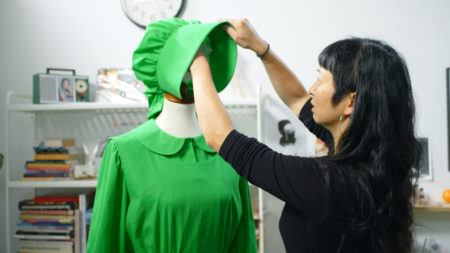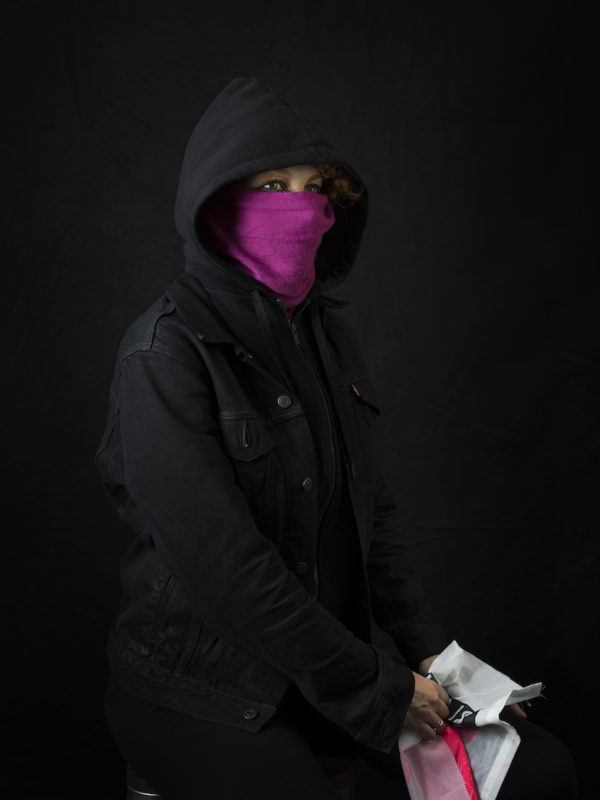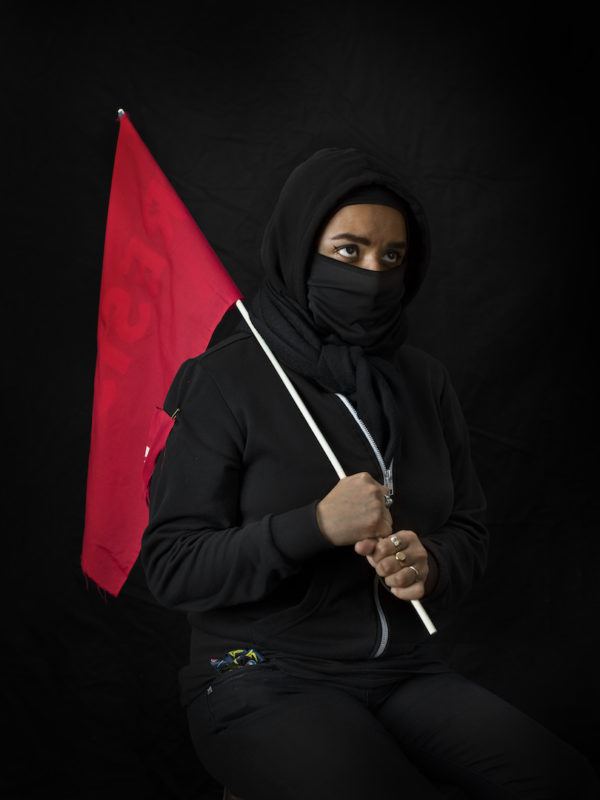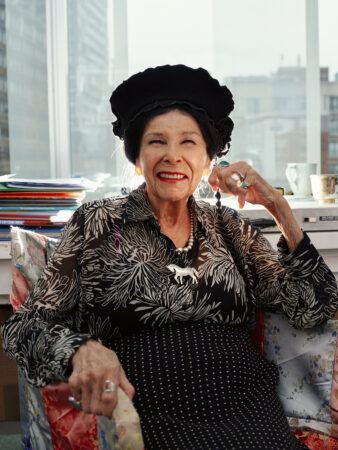
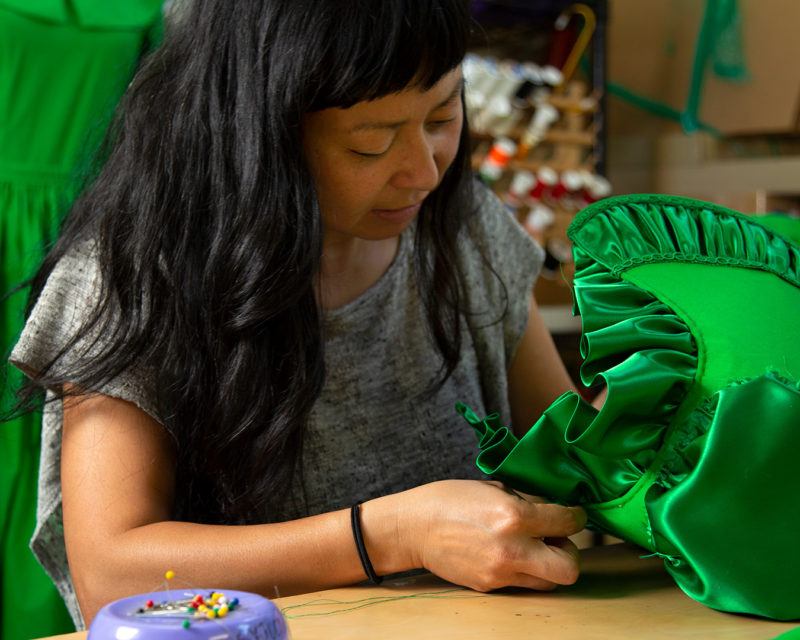
In the Studio
Stephanie Syjuco recalibrated her practice to provide aid for essential workers on the front lines of a global pandemic.
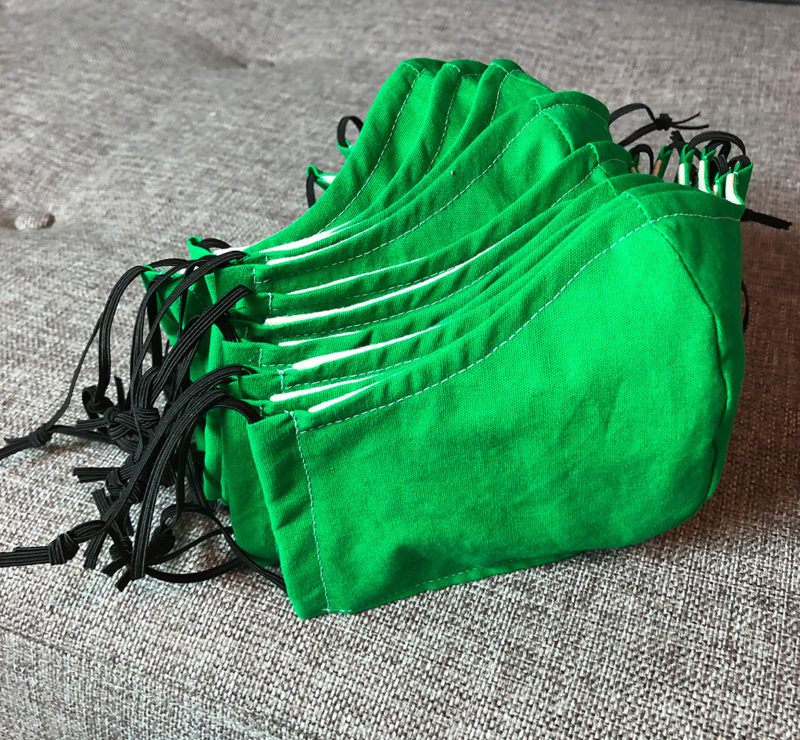
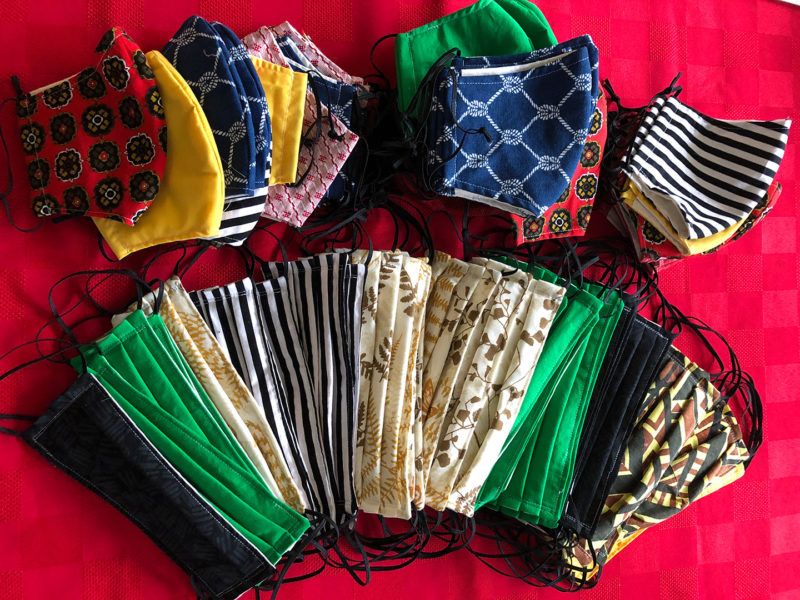


Art21Can you tell us what you’ve been working on since the shelter-in-place order was put into place in the Bay Area due to COVID-19?
Stephanie SyjucoMy studio is located on the campus of UC Berkeley, where I teach, and that’s all on lockdown. Even if I wanted to, I’m not allowed into the space. So, I’ve really been trying to figure out how to recalibrate.
When this whole thing started, it became apparent that lack of protective face coverings was going to become a big problem. There were a lot of home sewers across the country who were starting to pool knowledge to figure out what cloth masks could work. I have a sewing machine at home and I’ve had a couple of decades worth of sewing experience, from fabricating my own artwork, so [making masks] seemed pretty straightforward. I went through a couple of different prototypes, got feedback from other people, and settled on a couple of different styles that I’ve been producing now.
In my own art practice, I have a tendency to produce a lot of handmade works for my installations and sculptures. Serial production doesn’t feel that alien to how I’ve spent my time for my own artwork. I’ve pretty much been [making masks] full-time, which I know sounds strange because maybe I should be doing other things.
Can you tell us about the fabric you’ve been using to make the masks?
I was using a large green screen chroma key backdrop fabric, the same kind that I use in my own artwork. I used that because it was immediate, but it was also an interesting overlap in the materials involved in my artwork and being confronted with the reality of having to fabricate for an entirely different need.
When I use [chroma key] in my artwork, I use it as a symbol of the ability of the material to be a stand-in for multiple ideas. Chroma key green backdrops are usually used in video post-production, because when you shoot someone against it, you’re able to drop out that green color and substitute in any image.
[The masks] are first and foremost though—not artworks, and they’re not meant to be seen as that. I make them primarily for what I consider front-line workers who are not in the medical industry—everyone from food bank workers, volunteers, and folks who work with the unhoused community, to grocery store workers and delivery people—all the people that are cut out of the priority line for personal protection but are completely integral to how this country runs.
https://www.instagram.com/p/B-0OEE-Ffdl/
Your artwork often draws out tensions around labor, race, and gender. How are those surfacing through the process of making the masks?
[Making masks requires] a massive amount of labor and materials that are being provided by the everyday person to compensate for the government’s complete disinvestment in its healthcare system, as well as its inability to properly prepare. We’re talking millions of masks that are needed in order to cover the fact that the federal government has not been able to fully bolster and supply the national stockpile of protective gear.
From what I’ve observed, it is a really gendered disparity of who is being called upon to give the free labor and who also, in the end, is expected to go uncompensated. It’s really frustrating.
I deeply respect everybody who’s doing this work and I do appreciate the fact that people are galvanizing on a community level to provide for both hospital workers and average citizens. But this should not be happening. This is a man-made tragedy.
Do you think your previous works, like the photographs from your 2017 CITIZENS show, which featured masked figures, will be read differently now?
I’ve talked a lot about masks because part of the [CITIZENS] exhibition dealt with the protests that happened after the 2016 Presidential Election. At that time, masks were seen as a dangerous symbol. It’s so ironic that it went from a symbol of protest or anti-governmental resistance to now, being a form of safety that everyone has to adopt.
I think [the photographs] will be seen in a different light, because the automatic association with [masks] won’t necessarily be of a dangerous individual. But again, that’s complicated; it’s still a symbol of alarm and this notion of an unwell society or a sickness.
There’s also a cultural stigma in the U.S. to mask-wearing, to be so publicly “sick.” In the Asian countries that I’ve lived in, it’s so much more common to wear a mask because of pollution. There’s tons of them in circulation. In the U.S., there was a huge resistance to visually acknowledging that there is a problem. The news can say it, we can talk about it, but to visualize it so starkly—I think that was really scary to the American public who has never felt that that story would apply to them.
Also, there was a huge rise in xenophobic attacks against Asians and Asian Americans in the U.S. who were wearing masks, and I find it really ironic now that more people are able to or are encouraged to wear them. It doesn’t mark Asian Americans or Asian people in the U.S. as diseased, foreign others and it’s shameful that that was an effect. It’s very complicated. I’ve had a lot of time to think about it too, because obviously I just make [masks] now full-time. There is this grand irony in me spending all this time as an Asian American person seeing the rise in hate crimes and attacks against Asians and making these masks for free.

